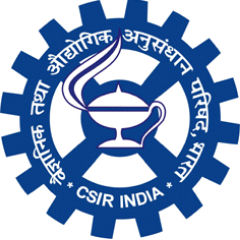预约演示
更新于:2025-09-09
Indian Institute of Integrative Medicine
更新于:2025-09-09
概览
标签
肿瘤
感染
神经系统疾病
小分子化药
中药
化学药
疾病领域得分
一眼洞穿机构专注的疾病领域
暂无数据
技术平台
公司药物应用最多的技术
暂无数据
靶点
公司最常开发的靶点
暂无数据
| 排名前五的药物类型 | 数量 |
|---|---|
| 小分子化药 | 17 |
| 中药 | 5 |
| 化学药 | 1 |
| 未知 | 1 |
关联
24
项与 Indian Institute of Integrative Medicine 相关的药物靶点- |
作用机制- |
在研适应症- |
非在研适应症- |
最高研发阶段临床申请 |
首次获批国家/地区- |
首次获批日期- |
靶点 |
作用机制 PI3Kα抑制剂 |
在研适应症 |
非在研适应症- |
最高研发阶段临床申请 |
首次获批国家/地区- |
首次获批日期- |
靶点- |
作用机制- |
在研适应症 |
非在研适应症- |
最高研发阶段临床申请 |
首次获批国家/地区- |
首次获批日期- |
1
项与 Indian Institute of Integrative Medicine 相关的临床试验CTRI/2008/091/000090
A double blind, placebo controlled comparative, randomized study to evaluate efficacy & Safety of Colebrookea Oppositifolia (Aceteoside) in acute hepatitis A/B Patients.
开始日期2008-07-15 |
申办/合作机构 |
100 项与 Indian Institute of Integrative Medicine 相关的临床结果
登录后查看更多信息
0 项与 Indian Institute of Integrative Medicine 相关的专利(医药)
登录后查看更多信息
424
项与 Indian Institute of Integrative Medicine 相关的文献(医药)2025-08-01·CARBOHYDRATE RESEARCH
A brief account of the application of glycosyl halide as glycosyl radical precursor towards glycosylation through visible light catalysis
Review
作者: Zargar, Irshad Ahmad ; Haldar, Rahul ; Das, Ramanand ; Bappa, S K ; Mukherjee, Debaraj ; Kundu, Taraknath
Glycosylation is potentially one of the most important reactions in glycochemistry, where precise control over the anomeric selectivity is crucial for synthesizing biologically relevant glycoconjugates. Over the last two decades, the advent of visible light chemistry for the generation of glycosyl radicals and its application in the synthesis of glycosides has revolutionized the impact on the stereoselectivity of glycosylation. The visible light-driven radical-based reactions offer exceptional functional group tolerance, operate under mild reaction conditions, and have emerged as a powerful tool for synthesizing potent glycosyl compounds, which include aryl/alkyl glycosides, 2-deoxy sugar, glycosylamino acid, glycosylpeptides, and other glyco-conjugates. In this review article, a brief account of the evolution of glycosyl radical chemistry, with a focus on the visible light-mediated activation of glycosyl halides and its transformative impact on glycoside synthesis, has been discussed.
2025-08-01·CURRENT PHARMACEUTICAL BIOTECHNOLOGY
Emerging Applications of Plant Antimicrobials in the Food Industry
Article
作者: Malhotra, Anjleena ; Bhardwaj, Monika ; Kumar, Sandeep ; Rohilla, Suman ; Grover, Parul ; Pathak, Anuj ; Genovese, Carlo ; Sharma, Ram
Food safety is a global concern with significant public health implications. Improper
food handling can harbor a wide range of pathogenic organisms. Antimicrobial agents are crucial
for controlling microbes and ensuring food safety and human health. The growing demand
for natural, safe, and sustainable food preservation methods has driven research into using plant
antimicrobials as alternatives to synthetic preservatives. The food industry is now exploring innovative
approaches that combine various physical methods with multiple natural antimicrobials.
This review aims to outline the evolving applications of plant antimicrobials in the food
industry. It discusses strategies for managing bacteria and categorizes different plant antimicrobials,
providing insights into their mechanisms of action and structures. This review offers a
comprehensive overview of antimicrobial peptides (AMPs), detailing their structural characteristics,
mechanisms of action, various types, and applications in food packaging fabrication and
explaining how they contribute to food preservation. It highlights the synergistic and additive
benefits of plant antimicrobials and their successful integration with food technologies like nanotechnology,
which enhances the hurdle effect, improving food safety and extending shelf life.
The review also emphasizes the importance of antimicrobial peptides and the need for further
research in this area. Safety assessment and regulatory considerations are discussed as well. By
addressing these gaps, plant antimicrobials have the potential to pave the way for more effective,
safe, and sustainable food preservation strategies in the future.
2025-07-01·STEROIDS
Corrigendum to “Sonogashira coupling-based synthesis and in vitro cytotoxic evaluation of C-2 alkynyl derivatives of withaferin A” [Steroids 212 (2024) 109526]
作者: Maqbool, Mir Shahid ; Firdous, Sameera ; Hussain, Gulzar ; Yousuf, Syed Khalid ; Malik, Fayaz A ; Mir, Shabir Ahmad ; Bhat, Mohammad Yaqoob
2
项与 Indian Institute of Integrative Medicine 相关的新闻(医药)2025-04-08
Jammu: The Indian Institute of
Integrative Medicine
(
IIIM
) Jammu signed an agreement on Monday with Kerala-based
Pankajakasthuri
India private limited for the
pre-clinical validation
of a poly-herbal formulation for bronchial asthma under the
AYUSH framework
.
The agreement for the sponsored research project was signed by Dr Zabeer Ahmed of
CSIR-IIIM
and Dr J Hareendran Nair of Pankajakasthuri in the presence of senior scientists and officials from both organisations, an IIIM spokesman said.
"This collaboration focuses on the pre-clinical validation of a poly-herbal formulation designed to manage bronchial asthma, conducted under the AYUSH framework," he said.
As part of the project, CSIR-IIIM will carry out phytochemical standardization, in-vitro and in-vivo studies, and toxicity assessments of the
herbal formulation
, he said.
Dr Ahmed described the partnership as a "ground-breaking step" in scientifically validating AYUSH products, adding that the project is supported by the Ministry of AYUSH and the government of India.
He said the collaboration reflects a shared commitment to community well-being and sustainability.
Dr Nair said the association with CSIR-IIIM would strengthen public trust in their products. Pankajakasthuri's Executive Director Kishan Chand expressed satisfaction with the scientific discussions held with CSIR-IIIM, whose team will lead the research.
The partnership is seen as a significant move toward blending traditional knowledge with modern science to promote integrative medicine, the spokesman said.
Before the signing the agreement, CSIR-IIIM presented its achievements while Pankajakasthuri showcased a video on its corporate social responsibility (CSR) work.

2025-04-08
Jammu: The Indian Institute of
Integrative Medicine
(
IIIM
) Jammu signed an agreement on Monday with Kerala-based
Pankajakasthuri
India private limited for the
pre-clinical validation
of a poly-herbal formulation for bronchial asthma under the
AYUSH framework
.
The agreement for the sponsored research project was signed by Dr Zabeer Ahmed of
CSIR-IIIM
and Dr J Hareendran Nair of Pankajakasthuri in the presence of senior scientists and officials from both organisations, an IIIM spokesman said.
"This collaboration focuses on the pre-clinical validation of a poly-herbal formulation designed to manage bronchial asthma, conducted under the AYUSH framework," he said.
As part of the project, CSIR-IIIM will carry out phytochemical standardization, in-vitro and in-vivo studies, and toxicity assessments of the
herbal formulation
, he said.
Dr Ahmed described the partnership as a "ground-breaking step" in scientifically validating AYUSH products, adding that the project is supported by the Ministry of AYUSH and the government of India.
He said the collaboration reflects a shared commitment to community well-being and sustainability.
Dr Nair said the association with CSIR-IIIM would strengthen public trust in their products. Pankajakasthuri's Executive Director Kishan Chand expressed satisfaction with the scientific discussions held with CSIR-IIIM, whose team will lead the research.
The partnership is seen as a significant move toward blending traditional knowledge with modern science to promote integrative medicine, the spokesman said.
Before the signing the agreement, CSIR-IIIM presented its achievements while Pankajakasthuri showcased a video on its corporate social responsibility (CSR) work.

100 项与 Indian Institute of Integrative Medicine 相关的药物交易
登录后查看更多信息
100 项与 Indian Institute of Integrative Medicine 相关的转化医学
登录后查看更多信息
组织架构
使用我们的机构树数据加速您的研究。
登录
或

管线布局
2025年12月23日管线快照
管线布局中药物为当前组织机构及其子机构作为药物机构进行统计,早期临床1期并入临床1期,临床1/2期并入临床2期,临床2/3期并入临床3期
临床前
21
3
临床申请
其他
7
登录后查看更多信息
药物交易
使用我们的药物交易数据加速您的研究。
登录
或

转化医学
使用我们的转化医学数据加速您的研究。
登录
或

营收
使用 Synapse 探索超过 36 万个组织的财务状况。
登录
或

科研基金(NIH)
访问超过 200 万项资助和基金信息,以提升您的研究之旅。
登录
或

投资
深入了解从初创企业到成熟企业的最新公司投资动态。
登录
或

融资
发掘融资趋势以验证和推进您的投资机会。
登录
或

生物医药百科问答
全新生物医药AI Agent 覆盖科研全链路,让突破性发现快人一步
立即开始免费试用!
智慧芽新药情报库是智慧芽专为生命科学人士构建的基于AI的创新药情报平台,助您全方位提升您的研发与决策效率。
立即开始数据试用!
智慧芽新药库数据也通过智慧芽数据服务平台,以API或者数据包形式对外开放,助您更加充分利用智慧芽新药情报信息。
生物序列数据库
生物药研发创新
免费使用
化学结构数据库
小分子化药研发创新
免费使用
